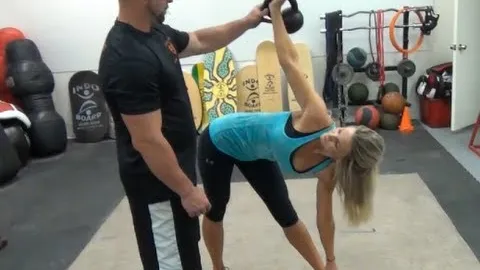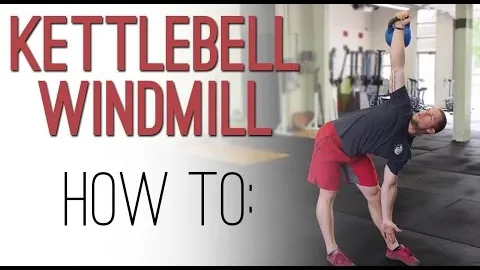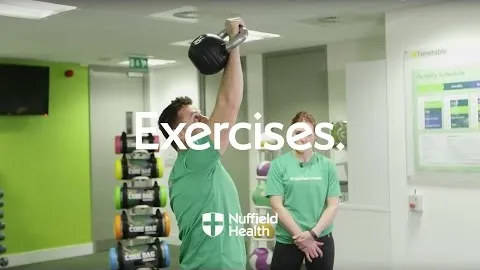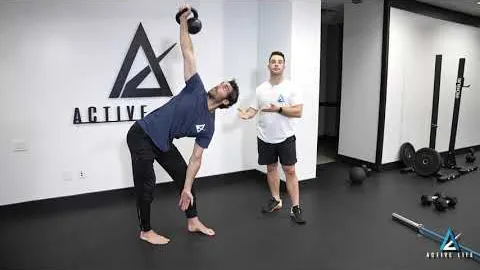



In recent years, kettlebell training has gained immense popularity due to its ability to deliver both strength and cardiovascular benefits in one efficient workout. One kettlebell exercise that deserves special mention is the Kettlebell Windmill. Not only does it challenge the entire body, but it also demands strength, flexibility, and stability in equal measure. In this article, we will delve into the intricacies of the Kettlebell Windmill, providing you with a step-by-step guide on how to perform it correctly, its benefits, and precautions to keep you safe during your training sessions.
The Kettlebell Windmill is a compound exercise that engages multiple muscle groups simultaneously and improves core strength, flexibility, and mobility. The exercise mimics the windmill motion, wherein the body twists and bends to reach towards the floor while holding a kettlebell overhead. It primarily targets the shoulders, core, hips, and hamstring muscles.
Step 1: Set the starting position
Step 2: Initiate the movement
Step 3: Hinge at the hips and reach towards the floor
Step 4: Pause at the bottom
Step 5: Return to the starting position
Core Strengthening: The Kettlebell Windmill engages the entire core, including the deep abdominal muscles, obliques, and lower back, promoting stability and strength.
Improved Hip Mobility: The exercise requires a wide range of motion in the hips, aiding in mobility and preventing tightness in the hip joints.
Shoulder Stability and Mobility: As you stabilize the kettlebell overhead, the Kettlebell Windmill strengthens the muscles surrounding the shoulders and improves overall shoulder mobility.
Enhanced Hamstring Flexibility: The bending and reaching motion involved in the exercise effectively stretches the hamstrings, increasing flexibility and reducing the risk of injury.
Functional Strength: The Kettlebell Windmill replicates movements necessary for daily activities, making it particularly useful for athletes and individuals looking to improve overall functional strength.
While the Kettlebell Windmill offers numerous benefits, it is important to approach the exercise with caution to avoid any potential injuries. Here are some precautions and tips to keep in mind:
Start with a lighter weight: It is recommended to begin with a lighter kettlebell to ensure proper form and technique before increasing the weight.
Maintain proper form: Focus on keeping your core engaged, shoulders packed, and eyes fixed on the kettlebell throughout the movement.
Avoid rounding the back: Keep your spine neutral and avoid rounding or hunching your back during the exercise.
Listen to your body: If you experience any discomfort or pain, stop the exercise immediately and consult a fitness professional for guidance.
Seek professional guidance: If you are new to kettlebell training, it is advisable to seek guidance from a certified trainer to ensure you are performing the exercise correctly and safely.
Incorporating the Kettlebell Windmill into your fitness routine can yield significant benefits for your overall strength, flexibility, and mobility. With proper form and caution, this exercise can become an essential addition to your kettlebell training repertoire. So, grab a kettlebell, follow the step-by-step guide, and witness the transformative power of the Kettlebell Windmill.
If you're looking for a gym, fitness club or yoga studio, you've come to the right place.
You can find information about gyms in your area. Browse catalog of gyms and find gyms with classes which are you looking for.
On gym page you can find simple information like address, phone or website. You can find list of available classes. You can check availability of personal training or small group classes. On place page you can also see information about open hours.
You can find gyms near you with amenities, courts, studios and equipments.
Use our map to find gym at your city or district.
In Gym Navigator you can find list of exercises with movies for many body parts.
You can browse exercises catalog and find exercises the best of you.
You can also find exercises grouped into workout plans, which you can use to improve you body. Each routine show you exercises one by one and give you possibility to count you progress and count down rest time.